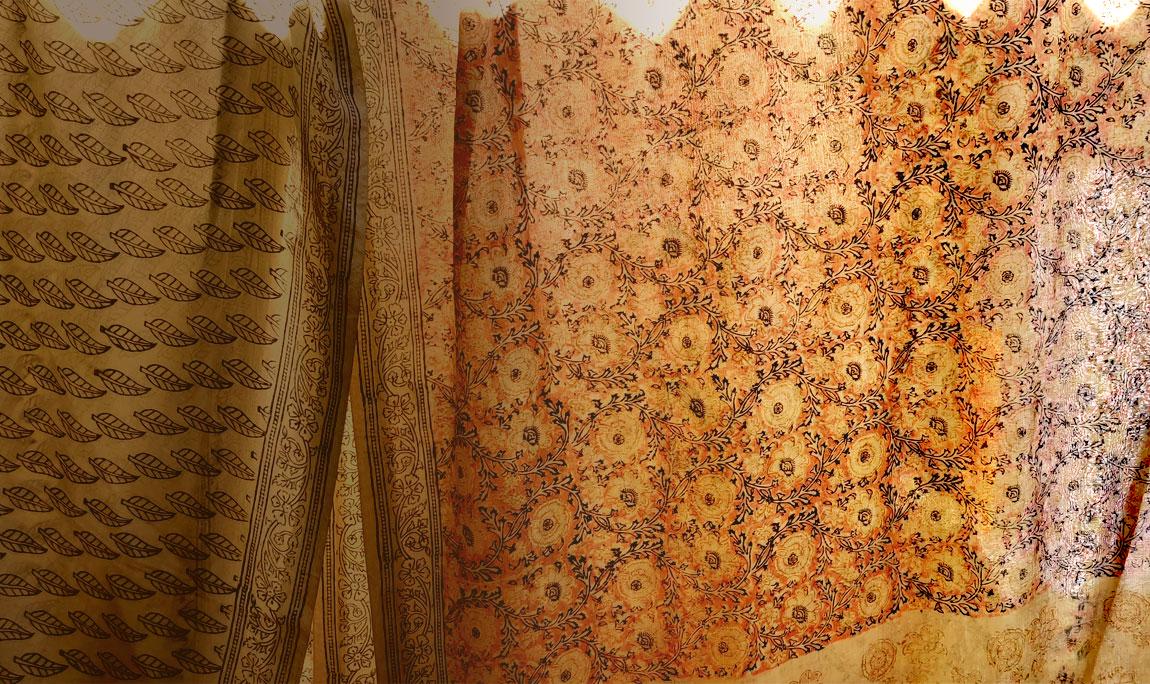When you hold a piece of Kalamkari fabric, you aren’t just touching cotton or silk — you’re touching history, soil, and soul.
Each swirl, each flower, and every shade of color carries the quiet rhythm of a village where art still breathes by hand.
A Fabric Born from Nature
In the coastal town of Pedana, Andhra Pradesh, artisans wake up before dawn.
They soak cotton in milk and natural mordants, grind jaggery and rusted iron to make black dye, and prepare wooden blocks carved with stories — parrots, peacocks, vines, and mythic tales. Then, with calm hands, they press stories onto cloth — one block, one color, one heartbeat at a time.
No machines. No hurry. Only patience and purpose. This is Kalamkari, an ancient art that means “drawing with a pen.” It’s India’s love letter to sustainable beauty — a reminder that fashion can still have a pulse.
Why I Fell in Love with Kalamkari
The first time I touched Kalamkari fabric, I felt the texture — soft yet strong, dyed in earthy tones that looked alive. It didn’t shout for attention; it whispered elegance. That’s when I realized — this wasn’t just a fabric to wear. It was a story to live in. For me, Kalamkari became more than a textile — it became a bridge. Between old and new, craft and creation, heritage and self-expression. When I design a scarf or a stole with it, I’m not just making fashion. I’m continuing a legacy.
The Magic Behind the Motifs
Every motif has meaning.
- Peacocks symbolize grace and pride.
- Lotus flowers stand for purity and calm.
- Vines and leaves show growth and connection.
These prints, made with natural dyes, fade gently over time — not because they lose color, but because they live like memories do.
Why Kalamkari Belongs in Modern Wardrobes
In an age of fast fashion, Kalamkari reminds us to slow down. It pairs effortlessly — with a white shirt, over jeans, as a stole on a cool evening, or as a drape at a summer festival. Each piece feels different because it is different — no two blocks align exactly the same. The irregularities, the brush strokes, the tiny smudges — all make it more human. And that’s the charm.
Bringing Kalamkari into My Creations
Every fabric comes directly from Pedana artisans who’ve spent decades perfecting this craft. When I design a scarf or pouch, I imagine how it will travel — from an Indian hand to someone’s wardrobe across the world. Each piece is hand-washed, sun-dried, and wrapped with love — ready to begin its next chapter.
A Note to You
When you buy a Kalamkari piece, you’re not just owning fabric. You’re carrying a story — of time, tradition, and touch. And maybe, like me, you’ll find that wearing Kalamkari feels less like dressing up, and more like coming home.

